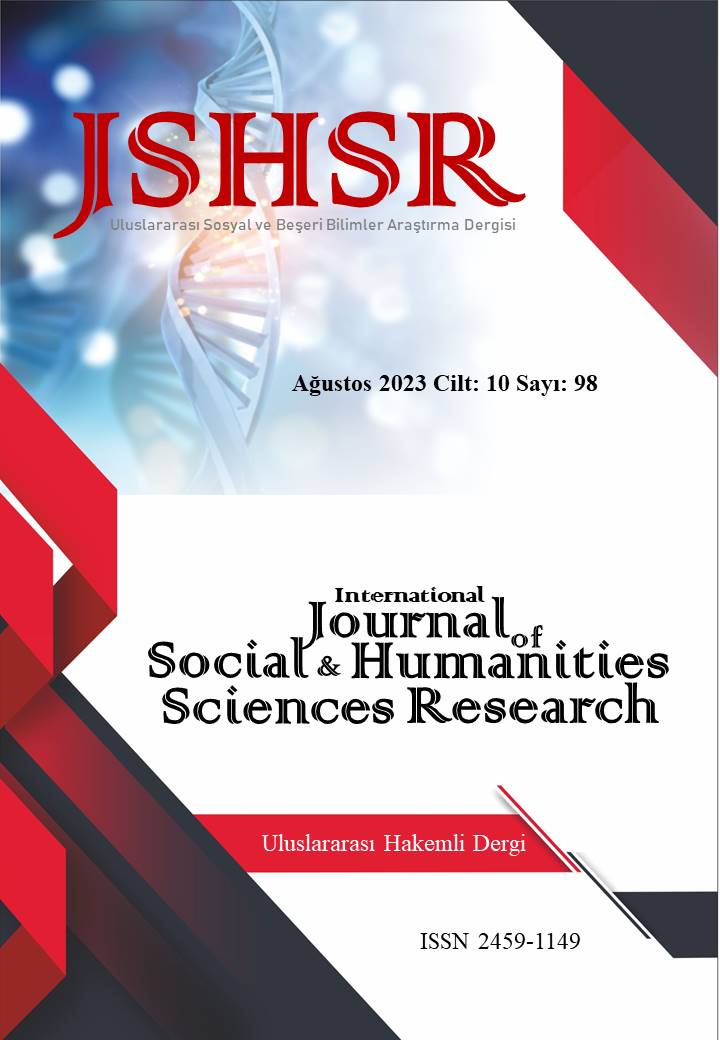The Impact of Artificial Intelligence on Education
DOI:
https://doi.org/10.5281/zenodo.8307107Keywords:
Education, Artificial Intelligence, TransformationAbstract
Artificial intelligence plays an important role in different areas of learning, teaching, and educational processes. Automated assessment systems offer great opportunities for measuring student achievement and providing feedback. At the same time, it can make the learning process more effective and efficient by providing customized learning experiences to the student. However, the effects of AI on education are not only about advantages. Issues such as the role of teachers, data privacy, and ethics are also important discussion points to consider. Artificial intelligence is an important technology that is transforming education. It can improve the experiences of students and teachers, personalize learning processes and increase the efficiency of educational institutions. However, concerns about the use of AI should also be taken into account, for example, data privacy, bias, and ethical issues. Therefore, it is important that AI technologies are carefully used and discussed in education. Artificial intelligence technologies have great potential in the field of education. They can offer personalized learning experiences to students, reduce the workload for teachers and provide support to educational institutions in data analysis and guidance. However, issues such as the compliance of artificial intelligence applications with ethical standards, data privacy, and the importance of teacher-student interaction need to be taken into consideration. It is important for educational institutions to achieve the goals of increasing students' achievement and improving the educational process by using artificial intelligence technologies carefully. In this study, the effects of artificial intelligence in the field of education are examined. Artificial intelligence technologies have developed rapidly in recent years and have led to various changes in educational processes. These changes have sometimes offered positive opportunities and sometimes created new challenges. The transformation of artificial intelligence in education will be discussed in terms of students, teachers, and educational institutions.
References
Beam, A. L., & Kohane, I. S. (2016). Translating artificial intelligence into clinical care. Jama, 316(22), 2368-2369.
Dacre Pool, L., & Qualter, P. (2012). Improving emotional intelligence and emotional self-efficacy through a teaching intervention for university students. Learning and Individual Differences. https://doi.org/10.1016/j.lindif.2012.01.010
Fahimirad, M., & Kotamjani, S. S. (2018). A review on application of artificial intelligence in teaching and learning in educational contexts. International Journal of Learning and Development, 8(4), 106-118.
Göksoy, S. (2013). Türkiye ve Avrupa Birliği Ülkelerinde Zorunlu Eğitim Uygulamaları. Asya Öğretim Dergisi, 1(1), 30-41.
Karasar, N. (2005). Bilimsel araştırma yöntemi (17. Baskı). Nobel Yayın Dağıtım.
Kelley, T. R., & Knowles, J. G. (2016). A conceptual framework for integrated STEM education. International Journal of STEM education, 3, 1-11.
Kena, G., Musu-Gillette, L., Robinson, J., Wang, X., Rathbun, A., Zhang, J. & Dunlop Velez, E. (2015). US Department of Education, National Center for Education Statistics. The Condition of Education 2015 (NCES 2015-144).
Kerr, S. (2017). Exploring the impact of artificial intelligence on teaching and learning in higher education. https://doi.org/10.1186/s41039-017-0062-8
Liebowitz, J. (2001). Knowledge management and its link to artificial intelligence. Expert systems with applications, 20(1), 1-6.
Pandarinath, C., Nuyujukian, P., Blabe, C. H., Sorice, B. L., Saab, J., Willett, F. R., Henderson, J. M. (2017). High performance communication by people with paralysis using an intracortical brain-computer interface. ELife. https://doi.org/10.7554/eLife.18554
Programas de las Naciones Unidas para el Desarrollo. (2015). Human Development Report 2015. Work for Human Development. Undp. https://doi.org/ISBN: 978-92-1-126398-5
Russell, S. J., & Norvig, P. (2010). Artificial Intelligence: A Modern Approach. Artificial Intelligence. https://doi.org/10.1017/S0269888900007724
Schleicher, A. (2012). Preparing Teachers and Developing School Leaders for the 21st Century: Lessons from Around the World. OECD Education and Skills. https://doi.org/10.1787/9789264174559-en
Schölkopf, B. (2015). Artificial intelligence: Learning to see and act. Nature. https://doi.org/ 10.1038/518486a
Shulman, C., & Bostrom, N. (2012). How hard is artificial intelligence? Evolutionary arguments and selection effects. Journal of Consciousness studies, 19(7-8), 103-130.
van Hooijdonk, R. (2017). 10 technologies that could one day turn us all into real cyborgs. https://www.richardvanhooijdonk.com/blog/en/10-technologies-that-could-one-day-turn-us-all-into-real-cyborgs
Yuan, X. (2021). Retracted: Design of College English Teaching Information Platform Based on Artificial Intelligence Technology. In Journal of Physics: Conference Series (Vol. 1852, No. 2, p. 022031). IOP Publishing.
Downloads
Published
How to Cite
Issue
Section
License
Copyright (c) 2023 INTERNATIONAL JOURNAL OF SOCIAL HUMANITIES SCIENCES RESEARCH

This work is licensed under a Creative Commons Attribution 4.0 International License.


